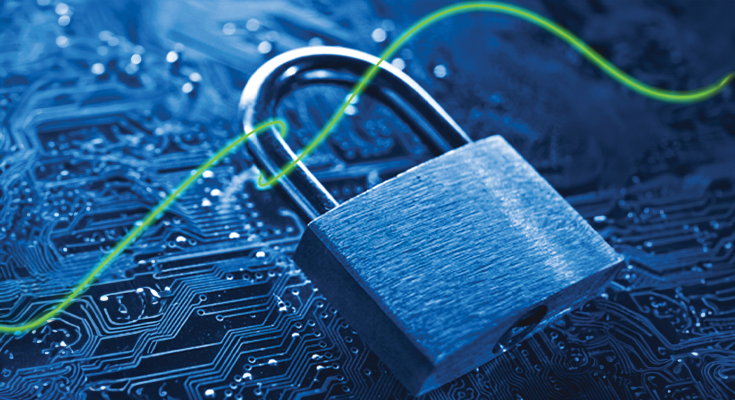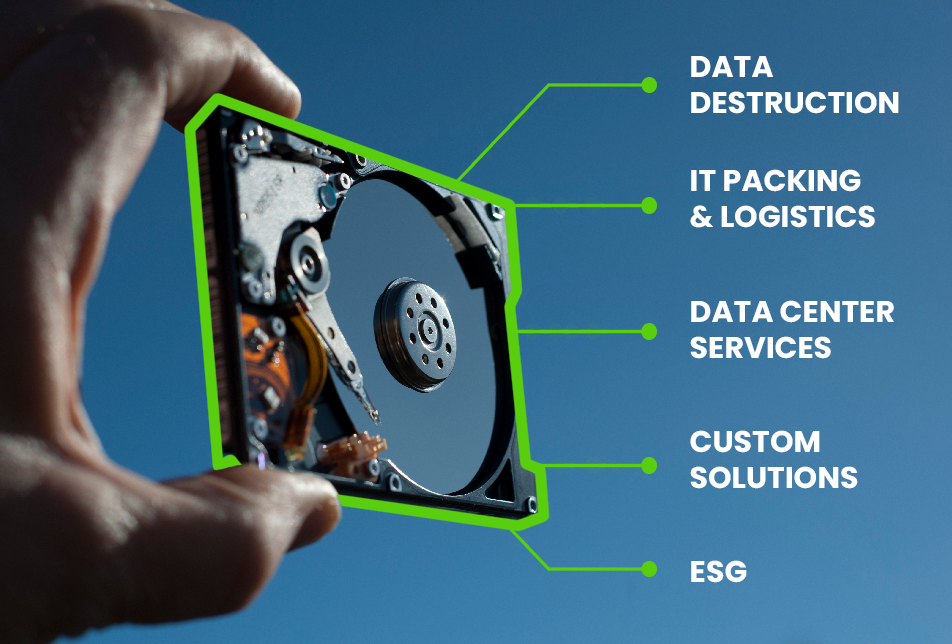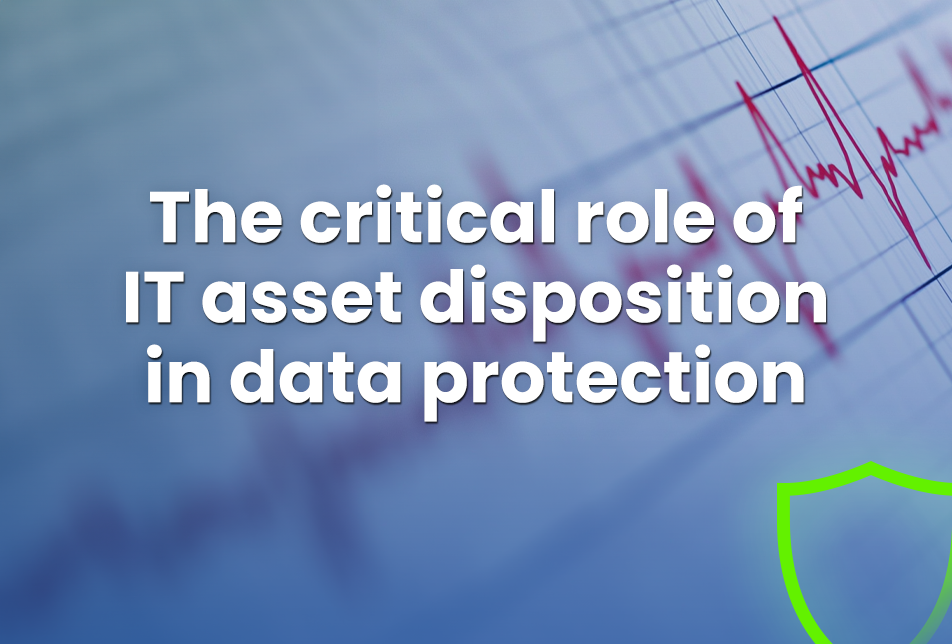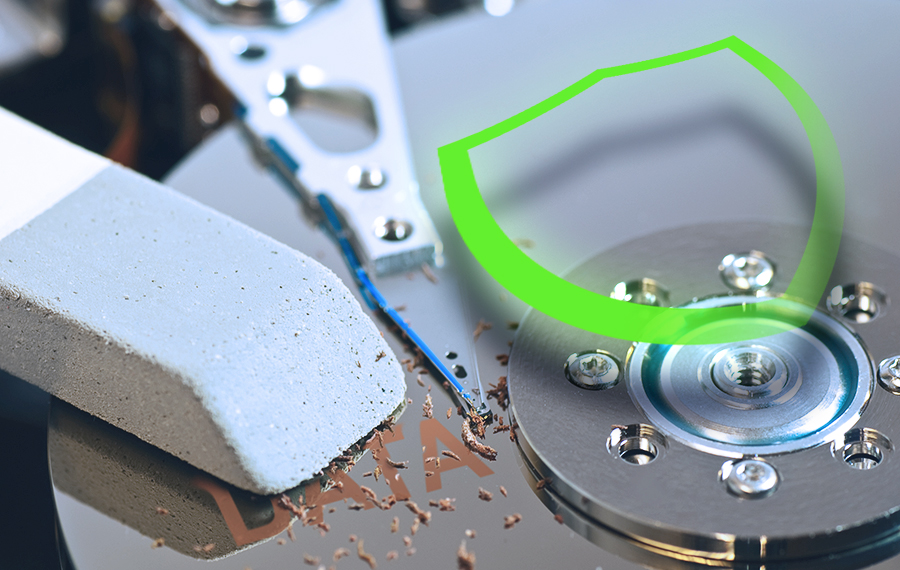Does your organization have a philosophy of data protection? Should it? And how does IT asset disposition fit inside your strategy?
In today’s digital age, IT hardware – in all its form factors and deployments – accesses, houses, transfers, analyzes and utilizes data. When the hardware reaches end of life, end of lease, becomes outdated or is otherwise unusable, IT asset disposition (ITAD) experts are tasked with delivering multiple results: ESG and circular economy initiatives, value retention and data protection.
Data protection vs protected data
Philosophically, data is at the core of the problem. While it is essential and valuable, poor stewardship can lead to severe consequences. Data storage is protected by how people manage it: encryption, access controls, secure server storage behind firewalls, secure networks, updated firmware, controlled backups and adherence to legal requirements and regulations.
Conversely, protected data shields people and organizations from malicious actors by safeguarding trade secrets, competitive edges, personally identifiable information (PII), financial assets and brand reputation.

The four pillars of data protection
You have all seen the four person chair trick: four people sit in a square formation while lying back onto one another’s knees. When the chairs are removed, the four have created a stable, self-supporting structure. To fully appreciate the significance of IT asset disposition, we must examine its symbiotic relationship with three other key elements: people, privacy, and data. These four pillars form the foundation of a comprehensive data protection strategy.

1. People
Employees are the first line of defense in protecting an organization’s data. Security awareness training is essential to prevent human error and data breaches. By understanding the value of data and the potential consequences of mishandling it, employees can significantly contribute to data protection efforts.
2. Privacy
Protecting sensitive information is paramount for organizations of all sizes. Compliance with data protection regulations is essential. Implementing strong privacy policies and procedures helps safeguard customer trust and avoid costly penalties.
3. Data
Data is a valuable asset that must be managed and protected throughout its lifecycle. Effective data management practices, including encryption, access controls, and regular backups, are crucial for preventing data loss and breaches.
4. Data Destruction
Data Destruction is the fourth pillar, the last person in the chair trick. Without a sound and reliable Data Destruction Expert and process to navigate, perform and verify data removal and compliance in aging and end-of-life assets, organizations are left on their own to protect data as it leaves their custody.
The importance of a data destruction expert
Data destruction, shredding, degaussing, erasure (or wiping), is explicitly harming a data bearing device beyond repair or recovery. How does destroying data fit into the protecting data philosophy?
While it might seem counterintuitive, data destruction is the final and most crucial step in data protection for the following reasons:
- Prevents data breaches: By physically destroying data-bearing devices, organizations eliminate the risk of unauthorized access to sensitive information.
- Ensures compliance: Many regulations, such as GDPR and HIPAA, require secure data destruction.
- Protects reputation: A data breach can be devastating to an organization’s reputation. Proper data destruction helps mitigate this risk.
- Facilitates asset disposal: Secure data destruction enables organizations to safely dispose, remarket, reuse and recycle IT equipment, reducing environmental impact and increasing value retention.
Data destruction acts as a safeguard, preventing potential harm after all other protective measures have been implemented. It is the final chair in the defense against data breaches.

How do you find a qualified data destruction expert?
To ensure the highest level of data protection, organizations must partner with service providers that prioritize compliance, rigorous documentation, and expert execution. i-SIGMA’s NAID AAA certification is the gold standard, signifying a deep understanding of data storage, secure destruction practices, and stringent chain-of-custody protocols. This rigorous certification process, including comprehensive employee vetting and training, guarantees optimal data security and peace of mind.
AFFIRM: Review Guardian’s certifications and compliance knowledge >
Additionally, seek referrals from ITADs and VARs that have a trusted data destruction services provider; their success and reputation depend on the quality of their partners, including data destruction experts.

Partnering with data destruction experts
If you are an ITAD, VAR, MSP, TSP or IT reseller needing outside data destruction services (and more), you need a partner to ensure that your customers’ data destruction needs are met. This includes a third-party data destruction provider that you can rely on for projects anywhere and stays up-to-date with the latest strategies, processes, regulatory information, industry standards and data storage knowledge.
You need a partner that incorporates absolute data destruction as part of a larger set of services as a one-stop shop for services that support your IT asset disposition practice.
Depending on the type of assets in scope, the type of media in use, the compliance requirements of your customer and their industry, their ESG and circular economy initiatives and their risk factor for data sanitization standards, you need a data destruction expert as a partner.
You need that fourth pillar to support people, data and privacy.

Supporting a philosophy of absolute, compliant data protection
Who protects what, or what protects who? Data protection necessitates a philosophical approach that recognizes the intricate interplay of people, data, privacy and data destruction – no matter the evolution of data storage technology. This philosophical framework underscores the imperative of safeguarding information throughout its lifecycle, from creation to EOL. As data storage hardware and processing evolve at an unprecedented pace, organizations must cultivate a culture of data stewardship, marked by robust security measures, vigilant risk management, and responsible IT asset disposition. Ultimately, data protection is an ongoing pursuit that demands continuous adaptation and innovation.
If you’re looking for data protection, Guardian Data Destruction offers services that can be combined with a full range of data destruction, secure IT packing and logistics to meet the size and scope of any project.
Be sure to review the complete list of services we offer, including data destruction, IT packing and logistics, enterprise and data center services as well as custom solutions and ESG support.

Would you like to explore data destruction needs in more detail, or perhaps discuss its role in specific industries or regulations? Contact us
Read next
- Get our list of data bearing devices and data bearing assets >
- Docking stations are getting smarter. Are dumb devices becoming a security threat? >
- Browse Guardian Data Destruction’s services (available through ITADs, VARs, MSPs) >
- IT Asset Manager’s guide to a hybrid data destruction policy >
- Destroying data? Download our NIST Guide to ensure proper sanitization >
Sign up for email updates to receive the latest in data security options from Guardian Data Destruction >



